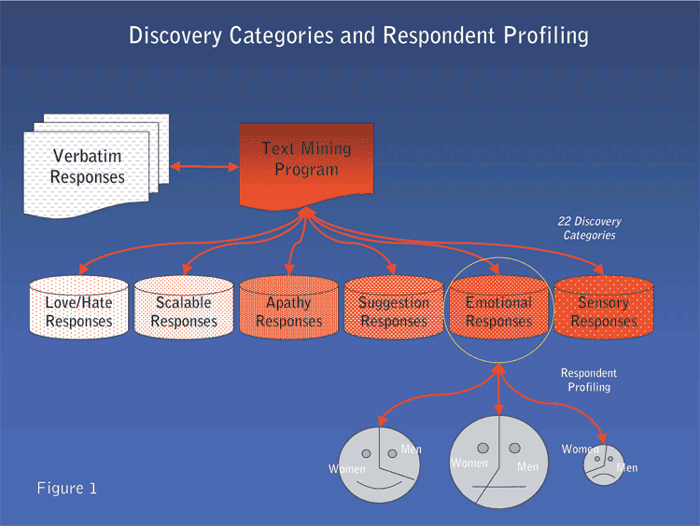Editor’s note: David Neubert is president of Hamilton-Locke, Inc., a Provo, Utah-based document analysis firm.
Multiple-choice surveys are designed for easy quantification to facilitate analysis and graphical presentation of results. In addition, they are designed to slot respondents based on pre-selected focal parameters. For example, if the interest is on product taste, questions will focus on a predetermined set of comparisons (“Which did you like better, A or B?”) or on a predetermined set of descriptors (sweet, sour, bitter). These questions miss any interest outside of the given descriptors (has a bite, like saccharine, vinegary) and will miss additional attitude influencers (looks oily, feels pasty).
In addition, multiple choice surveys design a framework of questions to work in a box manner, starting with a general question and successively narrowing the question focus until the response is direct and pointed. Therefore, these surveys are always biased with leading questions based on the predetermined focal elements. Additionally, many of these surveys are impracticably lengthy.
Until recently, open-ended questions (verbatims) that ask the respondent to express their opinion were difficult to quantify. Most verbatim analysis has been done by slotting the respondents into predetermined categories or by doing a quick read, establishing categories based on the initial perusal of the responses, and bucketing the respondents based on these categories.
Now new technologies in mining text built on linguistic and statistical methods of analysis can extract specific interests and group interests based on principle linguistic components and word/phrase relationships (collocations). Market researchers can take advantage of these tools to mine verbatims and deliver analyses that give clients the power to explore and discover elements beyond the pre-determined slots.
Customers want to tell you what they think
Radio talk shows, TV reality shows - people love to talk and we love to listen. It’s human nature. People want to express themselves. They want to be heard. Most customers want to voice their opinion and most clients want to get “voice of the customer” responses. Indeed, direct, pointed, and passionate responses are the stuff that product developers, account team managers and post-sales support staff crave.
Principle component analysis examines the essential makeup of verbatims and what natural buckets form from adjectives and adverbs, nouns, verbs and specific emotive words and sensory descriptors. Non-contextual words (i.e., a, an, and, the, these, those) are removed from the verbatims, creating a list of contextual words, along with frequency distributions and collocation relationships. Contextual words can then be sorted by product names, descriptors, sensory details, motivations, actions and by any number of other categories.
Collocation analysis examines the major contextual words and phrases to see what words and phrases are associated with or are neighboring the terms of interest. For example, which descriptors do respondents use to refer to a specific product? A table showing specific descriptors (and descriptor groupings) can be generated for each product. This analysis is extremely effective in determining critical elements associated with each specific area of interest. In addition, products and suggestion collocations can be listed by finding products that are associated with suggestion flags like “could you,” “would you,” you should,” “can you,” “I need…” This can be extremely useful in building customer relations and feedback to low-level product and service managers.
Finding attitude and intent components
Both principle components and collocation analysis let the verbatims speak to you and form the foundation for determining respondent attitude and intent. Attitude describes a feeling whereas intent describes movement and acceleration. For example, “I like your product and might buy it” vs. “I love your product and we will budget for it.” The word “like” vs. “love” demonstrates attitudinal differences and the words “might buy” vs. “we will budget for it” demonstrates differences in intent.

By comparing principle components and collocation analysis with demographic information, verbatims can give groupings and profiles of the respondents (see Figure 1). For example, if we examine taste as a principle component, and determine specific groupings as dictated by collocation analysis (e.g., Group 1 - bitter, sour, acidic, tart; Group 2 - sweet, sugary, syrupy), we can compare this information to determine if there is any relationship between Group 1 and various demographic variables (e.g., adults prefer Group 1 and kids prefer Group 2).
The valuable specific demographic relationships to responses provided by this important extension of verbatim analysis can help your clients focus their marketing budgets.
Building strategic influences
Verbatims can be used to build strategic value for clients. Marketing and sales, product development, post sales support and many other areas can benefit from verbatim analysis. Verbatims can even build an important foundation for communication between low-level managers and customers - moving your CRM programs from “customer listening” into “customer-manager communications.” When automated, this tool offers an even stronger ROI, with market research taking an integrated role in strategy planning and management.
